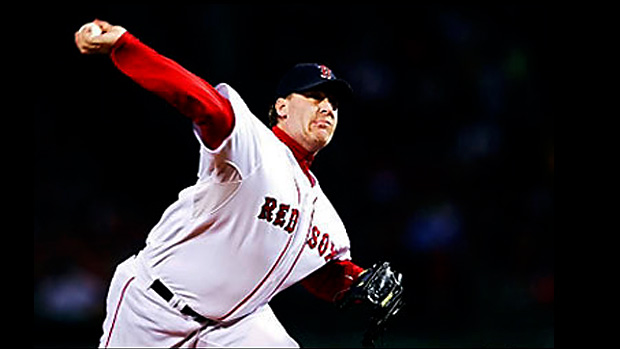Back in college I used a lot of Cliff's Notes. Don't get me wrong, I always read the books I was supposed to read but let's face it, many college profs think that fine literature is defined by how fast the student nods off. The faster the student's head thunks down on his desk, the finer the literature must be. So I'd jack myself up on Vivarin, trudge through those boring tomes and then read the Cliff's Notes. Sure enough, with the help of my pal Cliff everything clicked into place and I understood what the hell Shakespeare and Dante were talking about.
If you haven't followed the writings of a particular strength coach for some time, reading one of their articles is sort of like going from Marvel Comics to Shakespeare. Sometimes it's good to take a step back and look at what certain experts in their fields have given us, sort of like reading their Cliff's Notes just to get the highlights of their expertise and to summarize all the really good stuff they have to offer.
And this is what bodybuilding is all about – absorbing everything the gurus have to offer, then putting together your own programs that combine their expertise with your personal needs and goals. TC did this many moons ago in his Simpleton's Guide to the Poliquin Principles article. Basically he summed up all the important ideas behind Poliquin's training programs, sort of like fast forwarding through all the talking scenes in a porno film and getting right to the meaty stuff.
Out of all the incredible coaches that contribute to T-mag, the way I train has been influenced more by Ian King than any other. Sure, I pick up a thing or two from every coach, but Ian has really influenced the way I design training programs for myself and others. So in the spirit of my buddy Cliff, I've attempted to sort through all the 12-week programs, columns, and articles Ian has given us so far and summarize the dominating principles. Plus I'll toss in a few of the little interesting tidbits that may not qualify as "principles" but are darned cool nonetheless.
Note: Ian will be the first to tell you that he didn't invent all of this stuff, but it's safe to say he popularized and brought many of these ideas to light for T-mag readers.
Overtraining
"If in doubt, do less!"
As weight trainers, we've always known about the perils of overtraining. But most of the stuff we read in bodybuilding mags just talks about the signs of overtraining and inevitably says to just take a couple of days off when we see them. Ian took this a few steps further by talking about not just the signs of overtraining but how to prevent it, how to optimize recovery, and how to rationally step back and evaluate your condition. Here are a few of the things Ian has taught us in this area:
The Rest Week: One overriding concept here is to take the steps necessary to prevent overtraining before it occurs. One way to do this is to take a rest week, or half-week, every three weeks or so. Now if you're an average gym rat, this is a hard pill to swallow. Ian assures us that we won't shrink during this short time away from the gym; in fact, we may end up getting bigger and stronger in the long run because we're better recovered and less prone to injuries.
How do you know when it's time to take a recovery week? Ian recommends you set aside your fears of "shrinking" and unemotionally ask yourself these questions:
1) Do I feel stronger every week?
2) Do I remain excited about training every week?
3) If my goal is to put on weight, is it happening?
4) Am I sleeping well?
5) Do I wake up feeling refreshed each morning?
If you answer "yes" to all of these question, then you're on the right track. If you answer "no" to a couple of them, then it's time to take a half-week to a week's rest. This can be a week of "active rest" if you want, where you take in some outdoor activities and occasional light exercise. Just stay away from the heavy iron during this time.
Now, if your diet is perfect, your training schedule is optimized, and you have pretty good genetics, you may be able to train with weights regularly for up to 12 weeks. But after 12 weeks, even Superman needs a week off.
Sets: Do only 10 to 20 work sets per workout (not per muscle group, Arnold Jr.!) Ian notes that the average, drug-free guy who has a job, family responsibilities or school can only realistically handle 10 to 20 work sets per workout, with 12 being about right for the average dude.
There may be times when more sets are appropriate within a periodized plan, but there are also times when 5 to 15 sets may be even better for you. This may be the biggest pill of all to swallow for those of us that grew up on Arnold's Encyclopedia of Bodybuilding and two hour workouts. But let's face it, most of us don't have Arnie's freaky genetics or his access to "Vitamin S."
Length of Workout: Ian is a big believer is short workouts. By short he means to keep your workouts to an hour or less, not counting stretching and warms-ups. This is because after about 60 minutes of training, things like your body's natural androgen levels tend to plummet. This is coupled with an increase in cortisol, which is a catabolic (muscle wasting) agent. Combine these negative hormonal responses with diminishing stores of ATP-CP and neurotransmitters and you'd better get your arse out of the gym in an hour or less if you want to make decent gains.
Lifestyle: Ian was one of the first coaches in his field to stress the importance of lifestyle, or stuff that happens outside of the gym. Stress is the big culprit here and those who have high stress jobs, family demands, and money worries aren't going to recover quickly. This needs to be taken into consideration or you'll end up making poor progress. Ian has even gone so far as to say that those who have a lot of stress in their lives may not be able to lose fat easily! Other factors that affect recovery would be nutrition, supplementation, sleep patterns and the amount of physical activity you get outside of the gym.
To most people, Ian seems a little too cautious when it comes to overtraining. But let me ask you this: are you completely satisfied with your progress in the gym? If not, then why not try some of these things out and see what happens? You have nothing to lose and possibly a lot of muscle to gain.
Training to Failure
"At the end of the workout, you should only feel smashed some of the time, not all of the time!"
Here's another one that takes most bodybuilders a while to accept: you don't have to train to failure to grow. This relates to overtraining as well. In a nutshell, the average guy can't train to failure and beyond (forced reps, etc.) without overtaxing his system and halting his progress in the gym.
Some coaches would tell you not to train to failure at all. Coach King has a better idea. Based on his vast experience in the real world, Ian suggests you only train to failure or near failure about once every three weeks. Since most of Ian's programs involve three week cycles within a larger twelve week plan, this make perfect sense.
Here's how it works. Let's say you've planned out your training for the next tree weeks. You'll be using the same exercises and generally the same reps ranges, tempos and rest periods. On week one, you concentrate on perfect form and leave a few reps "in the hole" at the end of each set. If your goal is to get eight reps with a certain weight, use a weight that you can actually lift 10 or 11 times.
On week two you get a little closer to failure, but still fall a rep or two short. Finally, on week three, Ian allows you to go all out and train to failure. He'll still tell you that forced reps (where you train beyond failure with the use of a partner) are counterproductive for most natural lifters and that such techniques are to be used only on a limited basis and within a periodized plan.
Training Age and Rep Selection
"The more advanced you become, the lower the number of repetitions that will give you the best response."
We've all heard the "rules" when it comes to rep selection: one to four reps for strength, around eight to twelve reps for hypertrophy (muscle growth) and over twelve reps for endurance. For the most part, these rules are pretty accurate, although the specific numbers can vary to an extent based on genetics, muscle fiber type and a few other factors.
Then Ian comes along and lays a pretty profound idea on us: the longer you've been seriously training (training age) the less reps you'll need for hypertrophy! In other words, if you used to grow like a weed on ten to twelve reps as a beginner, then your ideal hypertrophy range may be four to six reps now that you have several years of experience.
Here's how Ian breaks it down:
If your main goal is muscle growth:
0-2 years of experience: 10-15 reps
3-6 years of experience: 8-12 reps
6-10 years of experience: 6-10 reps
>10 years of experience: 4-8 reps
If your main goal is maximal strength:
0-2 years of experience: 4-8 reps
3-6 years of experience: 3-6 reps
6-10 years of experience: 2-5 reps
>10 years of experience: 1-4 reps
And if you want the best of both worlds (size and strength):
0-2 years of experience: 6-12 reps
3-6 years of experience: 5-10 reps
6-10 years of experience: 4-8 reps
>10 years of experience: 3-6 reps
Perhaps this is one reason why gains slow down as the lifter becomes more experienced. Lifting heavier and lowing the rep range may keep the gains coming according to this theory. Pretty interesting.
Balance and Exercise Order
"I don't care what sequencing rules you've been exposed to or have adopted, if it's your weak link or number one priority, do it first."
If you train your chest and back on the same day, when's the last time you worked your back first? How about arms? Do you ever hit the triceps first? Do the lowly triceps get as many sets and reps as the mighty biceps? On leg day, do you ever train the hammies first? How about the calves? And when you first started training, did you give your legs and back an equal amount of attention as your chest and biceps? Probably not.
Yes, we all know that everything above is a mistake, but it took Ian King to whip our arses into shape and make us do something about it. And if you haven't done something about these imbalances, then you'll likely end up with an injury or at least an asymmetrical physique.
Ian says to look back at your usual training split and simply switch things around. If you always train legs at the end of the week, move them up to Monday and you'll see better results (assuming you've had a restful weekend.) Train back before chest and triceps before biceps.
The rule is simple: whatever you train first in the workout or first in the week will get the best results. The problem is that most people train the "fun" exercises and their favorite body parts first. In reality, they should be training the least fun movements and weakest muscle group first in the week and first in the training session.
How long do you have to switch things around? Well, variety is always best, but if you've gone two years training the quads before the hams, then it's safe to say it'll take almost two years of priority hamstring training to fix any possible imbalance. Also, if you have a weak limb – say your left arm is weaker than your right (hmm, wonder why, Spanky?) – then you should use unilateral exercises (work one limb at a time) and train the weaker limb first.
A more common mistake is to use a different amount of sets per muscle group. Maybe you don't leave out back work entirely, but you perform twelve sets for chest and then just "throw in" a few sets of pull-downs for back. Big mistake. If you do 12 sets for chest, then you should do 12, or close to 12, sets for back.
To help you understand how to divide and balance out your training, Ian came up with a list of major muscle groups that reflects their function:
Horizontal pulling (row)
Horizontal pushing (bench press)
Vertical pulling (chin-up)
Vertical pushing (shoulder press)
Hip dominant (deadlifts)
Quad dominant (squats)
Ian has a few other categories for abs, lower back, calves, and arms, but the ones above are main muscle groups you need to worry about. Based on this list, you need to be doing vertical as well as horizontal pushing and you need to be doing the same number of sets for each and keep the rep ranges equal where appropriate.
Let me give you an example of how this list can help you. Before Ian provided this simple list, I did almost nothing but chin-up variations for back training. Sure, I did rows occasionally, but not very often as compared to chins. This was an imbalance. Now I do just as many sets of horizontal pulling as I do vertical pulling and it's really helped my back development.
Hip and Quad Dominant Training Split
Leg training sucks. It's exhausting, painful, and unless you're 5'6" and nicknamed "Stumpy," you may not have the right structure to build really massive wheels anyway. But still, ya gotta train the legs!
Before Ian popped up from Down Under, most coaches said to train all the muscles of the legs in one session and use the most efficient exercises. That means squatting and deadlifting on the same day. Problem – As effective as these big mass builders are, they're also very fatiguing and really sap your energy levels. If you start your workout with squats, your deadlifts will suffer and vice versa.
Here are some exercises you can do on each of the two leg days:
Quad Dominant Movements
Full squat
Partial squats (with increased load)
One leg squat movements
Leg extension
Lunge
Leg press (depending on foot placement and body position)
Hip Dominant Movements
Deadlift and its variations
Stiff-legged deadlift
Good mornings
Power cleans
Hamstring curl
Leg abduct/adduct
Got stick legs? This may be your cure!
Tempo and the Four Second Rule
"Getting rid of the stretch shortening cycle will do more to recruit additional muscle fibers and maximize the effectiveness of your workout than practically anything else you can do."
–TC
If you're an avid T-mag reader, you may be saying to yourself right now, "Come on, Chris, the tempo discussion again? Man, we've gone over this a thousand times!" True. That's because this is a progressive publication and we know how important tempo is to your progress. But look around the gym today and see how many people are actually paying attention to tempo or speed of movement while lifting. Not too many, huh? So it's worth mentioning again.
You may not know this, but Ian King invented modern tempo prescriptions, you know, those 311 or 302 numbers you see listed after exercises in most strength coaches' training programs. Good thing too, since manipulating rep speed can lead to different lifting goals (hypertrophy, explosiveness, maximal strength, etc.)
And now, for the 489th time, here's how tempo prescriptions work. Let's say you're about to do a barbell curl using a 311 tempo. The first number is the lowering phase, also called the eccentric. You'll lower the bar to a three second count. The second number is how long you'll pause at the bottom of the movement, in this case one second. The last number is how long you should take to lift the weight, also called the concentric portion of the lift.
You'll need to change up your tempo to reflect your goals. For example, while bodybuilders may want to slow down the negatives to induce hypertrophy, an athlete in a combat sport may want to focus more on an explosive concentric. (For a good overview, read Doug Santillo's article, A Closer Look at Tempo.) And if your goal is to build muscle and attract scores of women, then you better pay attention to the four second rule.
The four second rule is a concept that Coach King and TC came up with for bodybuilders. The idea is simple: One rep – including the lowering, pause, and lifting– should last at least four seconds. So a tempo of 211 would work as would a tempo of 301 or 310. For all the details, read the original article here.
The main lesson Ian's taught us: tempo matters.
We've just scratched the surface of Ian's contributions to bodybuilding and athletics. In the next installment, we'll cover a few more of his most important ideas.




